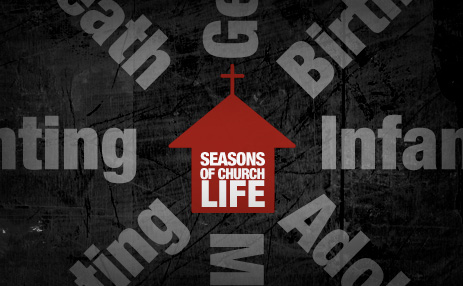Latest
-
Objections to the Christian Faith from the Unchurched and De-Churched
 Tue Dec 02, 2014
Tue Dec 02, 2014
by Resurgence -
Craig Groeschel: We Innovate for Jesus
 Tue Oct 14, 2014
Tue Oct 14, 2014
by Resurgence -
Mark Driscoll: Revelation
 Tue Oct 07, 2014
Tue Oct 07, 2014
by Resurgence -
RESURGENCE LEADERSHIP #034: JOHN PIPER, WHY I TRUST THE SCRIPTURES, PART 2
 Tue Sep 30, 2014
Tue Sep 30, 2014
by Resurgence -
Resurgence Leadership #033: John Piper, Why I Trust the Scriptures, Part 1
 Tue Sep 23, 2014
Tue Sep 23, 2014
by Resurgence

Archives
Seasons of Church Life
 Churches go through critical seasons of their life that largely determine both their longevity and health. Seeing, accepting, and navigating these seasons is incredibly important for the ongoing forward progress of the gospel.
Churches go through critical seasons of their life that largely determine both their longevity and health. Seeing, accepting, and navigating these seasons is incredibly important for the ongoing forward progress of the gospel.
Gestation
In this phase, God calls a leader (or leaders) to begin a new church and begins to clarify the specifics of their vision. An initial core of people is gathered, a meeting location is secured, some ministries begin to form, and funding is acquired.
Birth
In this season, the church goes from being a concept to a reality, opens itself up to invite in the greater community, and focuses its attention on evangelism, growth, and implementation of new systems and leaders.
Infancy
In this season, the attendance settles into a somewhat stabilized pattern, longer-range planning begins, new programs are added, and administrative structures grow to prepare for numerical growth and evolving vision.
Adolescence
In this season, church attendees begin rising up into positions of greater leadership, church government begins to form, and church attendance and financial giving begin to increase.
Maturity
In this season, additional staff is added, the church gains confidence that it now has sufficient stability to exist indefinitely, church government and leadership are solidified, church attendance and giving become strong, and the church is now independent and able to self-govern and self-finance. It is also common for churches in this season to purchase their own facility.
Parenting
In this season, which ideally would be during the first year of the plant, the church is ready to reproduce itself by giving leadership and monies for the purpose of starting another gestation phase and repeating the church planting cycle. This results in the birth of a new congregation, likely in connection with other church planting churches networking together for the cause of church planting. The unique element here is that the church(es) sponsoring the new church plant have a vested interest in praying for and holding accountable the new work since they have directly sacrificed for it.
Grandparenting
In this season, a church has planted enough churches that it begins to see third and fourth generation church plants birthed.
Death
In this season, a church is unhealthy and does not see conversion growth or attract young leaders. It thus faces a critical decision between two options. One, the church can deny its impending death, which may be many years out, sell off its assets such as land to prolong its death, redefine its mission to defend its death, and simply hold on as it slowly and painfully dies, often rewriting the best years of its history so as to feel significant and successful. Or two, the church can embrace its impending death as an opportunity to resurrect.
Resurrection
In this season, a church knows it is dying, or at least that it is not as healthy and fruitful as it should be, and humbly decides to shut down its organization and replant the church. This can be done by hiring a new entrepreneurial pastor to start over with the assets and with the freedom to kill programs, prune problem people, and decide whether to upgrade the facility, which is usually suffering from deferred maintenance, or sell it to use the money for a more strategic facility. This can also be done by giving the facility and assets to a church planter or a growing church, which requires the dying church to be more concerned about the name of Jesus than its own name, and the Kingdom over its church. Those churches that have this humility and wisdom should be cheered as model churches for the majority of American churches that have plateaued or are declining and need to have a vision for a faithful and fruitful future.